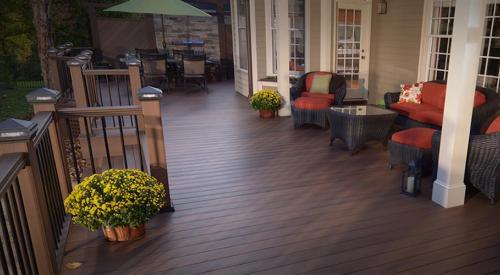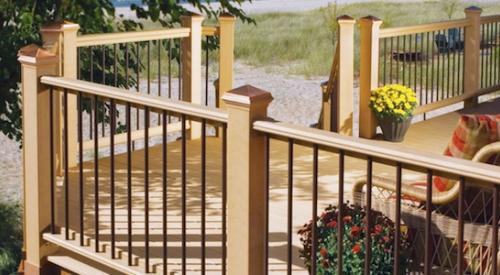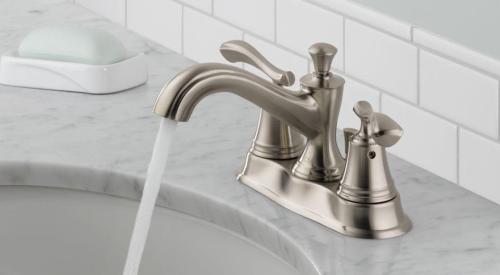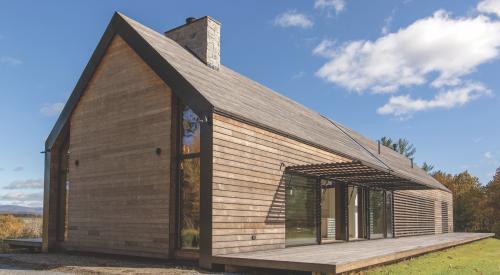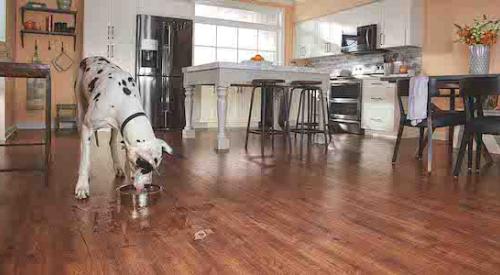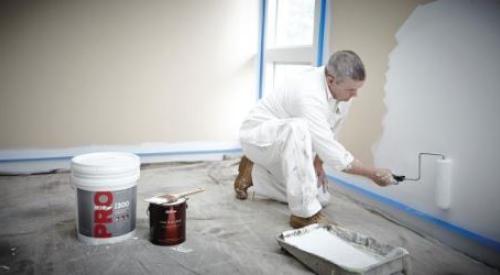With warm weather approaching, upgrades and enhancements to outdoor spaces are top of mind, especially considering that 85 percent of single-family homes in the United States include a porch, deck or some kind of outdoor living area, according to USA Today. Whether working on a porch or deck – you’ll need lumber. It’s important to study up on the pros, cons, and latest options in wood versus composite lumber to help educate and guide your customers.
Wood
Wood decking options may consist of pressure-treated lumber, as well as redwood, cedar and other species and varieties.
Cost: While wood decking offers a lower initial price to homeowners when compared to composites, it requires more regular maintenance.
Maintenance: Wood decks will need to be maintained on a very regular basis to ensure their good looks and protect them from the elements. There are a large number of products available to help in this process, such as BEHR Premium DeckOver.
Considerations:
- Lumber Treatments: There are a number of different processes and chemicals being used to treat lumber across the country. Some are more corrosive to metals and require the use of special fasteners and hangers. Some cannot be used in direct contact with aluminum, like in an aluminum flashing application.
- Pressure-treated wood: Lumber is pressure treated in order to protect it against rot, decay and termites. Be certain to research the pressure-treated wood available in your area prior to purchase. Certain species of lumber, such as Southern Yellow Pine, readily accept the pressure-treating process. Other species are more difficult to treat and require incising (holes poked in the lumber). Still other species may not be treatable at all. Check the tags on the ends of lumber to be certain that it has been checked by a third-party agency for proper treatment and proper retention levels for your intended use.
- Chemical treatment: Treated lumber in The Home Depot stores from Denver to the East Coast uses one chemical process called MCA (Micronized Copper Azole) to protect the wood. This process leaves the wood looking bright and clean and does not require the use of specially coated fasteners and hangers.
- Water protection: Some lumber has water repellant added during the treatment process. This reduces the amount of shrinking and swelling the wood will do, thus minimizing the potential for cracking and splitting. In all cases, wood will need regular staining/sealing in order to protect it from the elements and lengthen its usable life.
Composite Decking
Composite decking can be made from pvc or a mixture of polymers and wood fibers. In either case, composite decking and railings offer numerous color choices and extended warranties against things like cracking, splitting, color fade and stains. These products have come a long way in recent years, and with the addition of capped-board technology, composite decking today better meets customer expectations for standing up to the elements and reduced maintenance when compared to wood.
Cost: The initial cost of composite decking and railing materials can often seem high when compared to wood. However, when a customer considers that composite deck boards don’t require nearly the same amount of maintenance and restoration as a wood deck, the higher initial investment pays for itself in as little as four years.
Maintenance: Composite decking and railings do not require sealing, finishing or staining. Composite decking boards with the new capped board technology will never fade in color or stain.
Considerations: Composite decking is now offered in variegated colors that look like imported hardwood. In addition, composite deck boards are offered with grooved edges for hidden fastener attachment. Use of the hidden fasteners gives the final project a totally fastener-free surface appearance while correctly spacing the deck surface for drainage and air flow.
Talk with a Pro Associate at your local The Home Depot to learn what lumber options are best suited for your job and customer.

